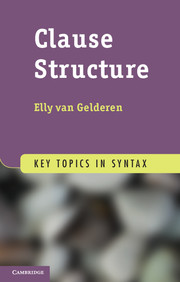6 - Connecting the layers
Published online by Cambridge University Press: 05 June 2013
Summary
The three layers form neat independent chunks in the sentence, with the vP-Layer being the most similar cross-linguistically. These three layers, however, also “communicate” with each other, and that’s how the CP-TP-VP order arises. We’ll now look at the ordering of the three layers and the links between them.
As for mood, we have seen mood in the CP in the form of indicative or subjunctive or imperative and in the TP in the form of evaluative/epistemic mood. An indicative mood is not compatible with an epistemic modal, but a subjunctive mood is. There are thus links between the various moods in the three layers, as well as between the mood in the C and the tense in the T, in that only an indicative mood is compatible with past or present tense. As for aspect, there is a high aspect (grammatical aspect in the TP-layer) and low aspect (lexical aspect in the VP-Layer), and they communicate as well, in that states do not typically occur as progressives. Focus involves the vP/VP and CP, and negation may involve all layers, and some languages have high negation and others relatively low negation.
- Type
- Chapter
- Information
- Clause Structure , pp. 189 - 202Publisher: Cambridge University PressPrint publication year: 2013



